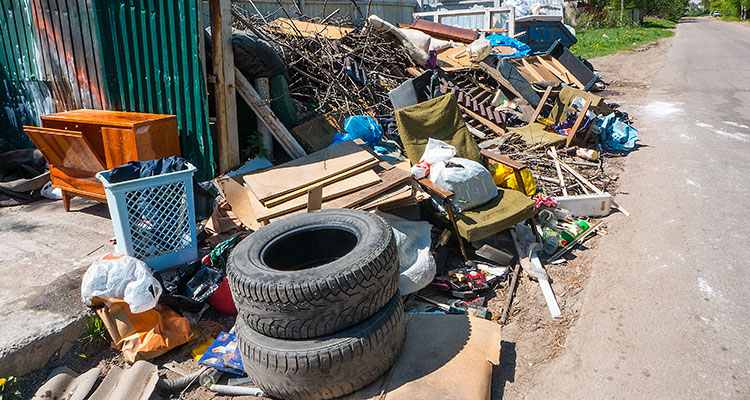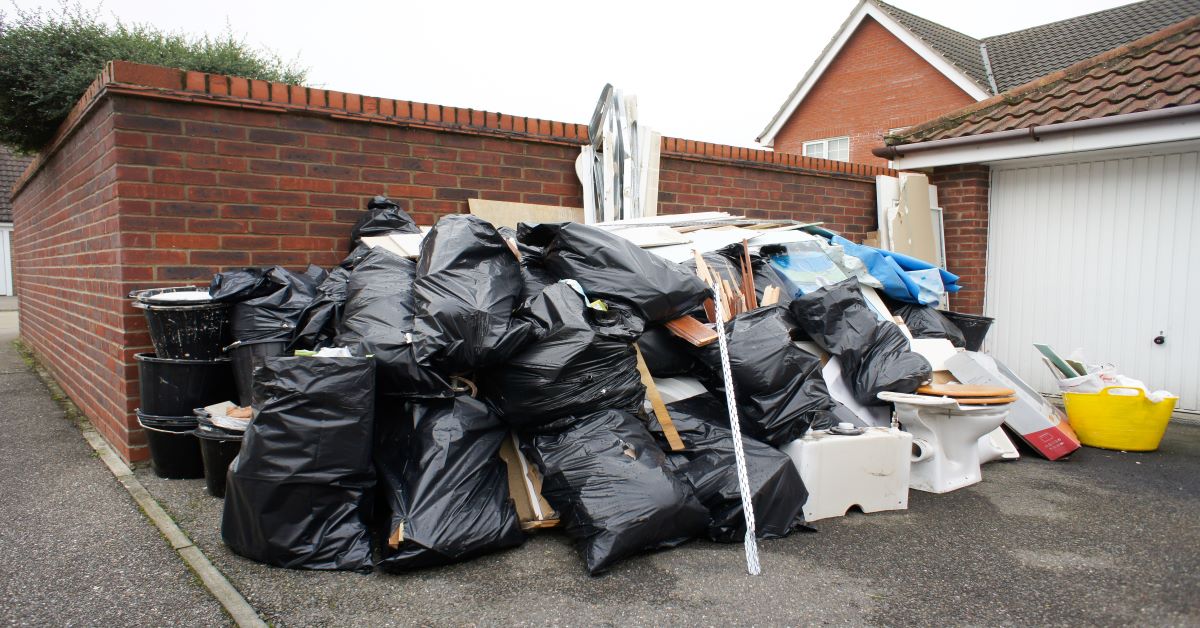Commercial Junk Removal Atlanta: Expert and Timely Solutions
Commercial Junk Removal Atlanta: Expert and Timely Solutions
Blog Article
Professional Waste Administration Methods Customized for Industrial Setup
Tailoring waste administration methods to match the one-of-a-kind demands of industrial setups is not just valuable but necessary for keeping functional performance and environmental sustainability. The mission for better waste monitoring in commercial setups entails a meticulous approach that stabilizes regulative conformity, cost-effectiveness, and eco-friendly obligation.
Relevance of Tailored Waste Monitoring
Customized waste administration practices are important in industrial settings to optimize source utilization and minimize environmental impact. Industrial operations create a significant quantity of waste, varying from strong results to chemical toxins, positioning a risk to the setting if not handled efficiently (Junk removal Atlanta). By personalizing waste management techniques to fit the particular needs and obstacles of each commercial facility, firms can not just abide by guidelines however also boost operational performance and sustainability
One secret aspect of customized waste management is conducting a comprehensive waste analysis to determine the types and quantities of waste generated. This evaluation enables firms to carry out targeted solutions such as reusing programs, waste segregation procedures, and waste-to-energy initiatives. By recognizing the structure of their waste streams, commercial facilities can create affordable approaches to lower waste generation at the resource, resulting in lasting environmental benefits.

Kinds of Hazardous Waste
What are the different classifications of industrial waste generally created in making procedures? Industrial waste can be categorized into several main categories based on its composition and characteristics.
An additional usual kind of hazardous waste is non-hazardous waste, which encompasses products like paper, plastics, and product packaging waste. While non-hazardous waste may not position immediate threats, appropriate administration is still necessary to decrease landfill usage and promote recycling and sustainability techniques.

Hazardous Waste Handling Treatments
Effective monitoring of dangerous waste in commercial settings demands stringent adherence to developed dealing with treatments to mitigate dangers and ensure environmental safety. Hazardous waste handling treatments involve a number of key actions to decrease the possible influence on human health and the atmosphere. To start with, correct identification and categorization of harmful waste are necessary. This includes figuring out the features of the waste to determine the proper handling, storage space, and disposal methods.
Secondly, when determined, contaminated materials needs to be meticulously set apart from non-hazardous waste to prevent contamination and ensure proper treatment. Storage of contaminated materials should follow policies regarding containment, labeling, and compatibility to stop leaks, spills, or other incidents that can jeopardize employees or the atmosphere.
In addition, handling procedures should include using individual protective equipment, employee training, and emergency feedback procedures. Routine evaluations, surveillance, and documents of contaminated materials handling tasks are critical to preserving compliance and determining locations for enhancement. By following these structured treatments diligently, commercial facilities can effectively take care of contaminated materials and copyright their dedication to environmental stewardship.
Carrying Out Efficient Reusing Practices

To carry out efficient recycling techniques, blog here commercial facilities need to initially perform a waste audit to identify the types and amounts of recyclable products generated in their operations. Based upon this audit, companies can then develop marked recycling terminals, provide ideal training to employees on appropriate sorting strategies, and collaborate with trusted reusing companions for the collection and processing of materials. Additionally, setting certain reusing objectives, tracking development, and consistently communicating with staff concerning the significance of recycling are essential steps to make sure the success and sustainability of reusing campaigns in industrial settings.
Surveillance and Continual Improvement
To ensure the effectiveness and sustainability of waste administration techniques in industrial settings, the execution of robust monitoring and continual renovation procedures is essential. Monitoring involves tracking crucial efficiency indications (KPIs) bye bye junk removal such as waste generation prices, reusing portions, and disposal prices. Consistently examining these metrics allows organizations to identify locations for improvement and measure the success of applied waste administration efforts.
Continuous improvement is crucial for refining procedures over time. It involves analyzing keeping track of information, recognizing ineffectiveness, and implementing adjustments to enhance waste monitoring methods further. This repetitive method fosters a society of ongoing improvement and technology within the company.
Making use of technology like waste monitoring software and IoT sensors can simplify keeping an eye on initiatives, giving real-time data for notified decision-making. Employee training and engagement also play a crucial role in ensuring the success of monitoring and continual enhancement campaigns, as frontline personnel are usually principals in waste administration processes.
Final Thought
Finally, customized waste management techniques are critical for commercial settings to successfully deal with numerous sorts of waste, consisting of hazardous materials. By executing effective reusing techniques and continuously monitoring and boosting waste management procedures, sectors can decrease their ecological influence and ensure compliance with policies. It is vital for business to focus on waste administration click this to secure the atmosphere and advertise sustainability in their procedures.
Report this page